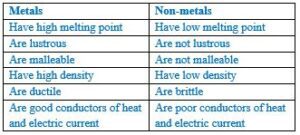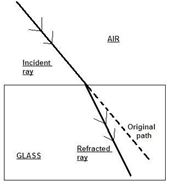JUNE 2019 SOCIAL STUDIES Paper 2 ESSAY This paper consists of three sections: I, II…
BECE 2014 Science Past Questions Paper 2 (Essay) – Answers
JUNE 2014
INTEGRATED SCIENCE 2
PAPER 2 – ESSAY
ANSWERS
1. (a)
(i) Name of each stage
I. Egg
II. Larva
III. Pupa
IV. Adult / Imago
(ii) How stage II obtains oxygen
The larva comes to the surface of the water body to obtain oxygen from the air through a structure called the siphon.
(iii) Methods of controlling each of the stages labeled III and IV
Controlling stage III
• Adding oil to cover the water surface
• Introduction of fish into the water body
• Spraying the water body with pesticides
• Adding kerosene to cover the water surface
Controlling stage IV
• The use of lethal ovitraps
• The use of mosquito spray / insecticide
• The use of mosquito coil
• Clearing mosquito breeding grounds such as choked gutters, stagnant pools of water, etc
(b)
(i) Name of the part labeled
I. Beaker
II. Evaporating disc
III. Candle
IV. Inverted funnel
V. Tripod stand
(ii) Name the separation method represented by each diagram.
A- Filtration
B- Evaporation
C- sublimation
(iii) The set-up used to obtain clear water from muddy water
Set up A
(iv) The set-up used to obtain salt from salt solution?
Set-up B
(c)
(i) Identification of the instruments labeled I, II, III, IV and V
I. Tape measure
II. stop clock
III. Thermometer
IV. Weighing scale/ Top pan balance
V. Measuring cylinder
(ii) State one use of each of the instruments labeled I, II, III and IV
I. to measure length of materials
II. to measure time
III. to measure temperature
IV. to measure the mass of materials
V. to measure the volumes of liquid substances
(iii) Read and record the volume of the liquid in the instrument labeled V
Volume of liquid = 160 cm3
(d)
(i) Name each of the parts labeled I, II, III and IV
I. – Gullet
II. – Gizzard
III. – Liver
IV. – Crop
(ii) State one function each of the parts labeled II and IV
I. – used to grind food
II. – used to store food temporarily
(iii) Name two farm animals that possess this type of digestive system.
Turkey, fowl, duck, ostrich, geese, guinea fowl.
(iv) Mention two diseases which affect this class of farm animals.
Coccidiosis, fowl typhoid, fowl pox, newcastle disease, pneumonia.
PART II
[60 marks]
2. (a) (i) Name the two elements that combine to form water.
Hydrogen and oxygen
(ii) Write a balanced chemical equation to show how the water is formed from the named elements
![]() (b) State two ways of maintaining a balance in an ecosystem.
(b) State two ways of maintaining a balance in an ecosystem.
• Stopping indiscriminate felling of tress
• By enforcing environmental protection laws; United Nation resolutions on release of poisonous gases should be adhered to.
• Activities of mining industries should be strictly monitored.
• Poaching of animals for their parts should be stopped
(c) (i) What is a fertile soil?
Soil that has the ability to supply the required nutrients needed for plant growth.
(ii) State two factors that cause loss of soil fertility.
• Soil erosion,
• leaching,
• excessive irrigation,
• over cropping,
• surface compacting.
(d) Classify the following items as magnetic or non-magnetic substance:
wood, steel blade, rubber and glass jar.
Magnetic substance – steel blade
Non-magnetic substance – wood, rubber and glass jar.
3. (a) (i) What is germination of seed?
The process by which a viable seed grows/develops into a seedling.
(ii) State two conditions necessary for the germination of seed.
• Presence of air
• Presence of water
• Viable seed
• Optimum temperature
(b) State four methods used in identifying farm animals
Tagging, tattooing, branding, tonging, ear notching
(c) Explain why it is easier to cut a piece of yam with a sharp knife than with a blunt knife
The cutting edge of a sharp knife has very small surface area so requires smaller force to yield the pressure needed to cut the yam – making cutting easy, but the cutting edge of a blunt knife has a relatively larger surface area so it needs a larger force to yield the pressure needed to cut the yam.
(d) State three differences between a metal and a non-metal.

4. (a) (i) What is debeaking?
The process by which about half the beak of a bird is removed
or
The process of removing the upper part of the beak of a bird
(ii) Give two reasons why debeaking in poultry birds is important.
• To prevent wasting of food
• To prevent egg eating
• To prevent vent pecking
• To prevent injuring other birds
(b) (i) A steel needle carefully placed on the surface of water floats. What type of force made the steel needle to float?
Surface tension
(ii) Name three substances that could be added to the water to make the steel needle to sink.
Oil, detergent, grease, kerosene, soap
(c) (i) Explain why gold is preferred to iron in the making of jewelleries.
It does not react with substances like water and oxygen.
It does not rust
It is very malleable
(ii) State one way of preventing rusting.
• Applying oil to the surface of the metal
• Galvanizing the metal
• Keeping the metal inside a desiccator
• Alloying the metal
(d) (i) State two elements of climate
Temperature,
rainfall,
relative humidity,
light intensity,
wind speed,
wind direction,
atmospheric pressure
(ii) Name the equipment used to measure each of the elements stated in (i) above.
| ELEMENT | EQUIPMENT |
| Temperature | Thermometer |
| rainfall | rain gauge |
| relative humidity | hygrometer |
| light intensity | photometer |
| wind speed | wind vane |
| wind direction | anemometer |
| atmospheric pressure | barometer |
5. (a) (i) What is refraction of light?
The bending of light rays as it travels from an optically less dense medium to an optically more dense medium.
(ii) Sketch a diagram to show the path of a light ray when it travels from air to glass.

(b) Explain why it is difficult to separate iron and sulphur mixture after strong heating.
This is because after strong heating, the iron and sulphur react to form iron (II) sulphide which cannot be separated by physical means
(c) (i) Give two example of digestive enzymes produced in humans.
Salivary amylase,
pepsin,
renin,
lipase,
trypsin,
pancreatic amylase,
maltase
(ii) For each of the enzymes given in (i), name the part of the human body where the enzyme is produced.
| ENZYME | PART WHERE ENZYME IS PRODUCED |
| Salivary amylase | Mouth |
| pepsin | stomach |
| rennin | stomach |
| lipase | pancreas |
| trypsin | pancreas |
| pancreatic amylase | pancreas |
| maltase | small intestines |
(d) List four methods of applying fertilizers to crops.
Drilling, broadcasting, side dressing , top dressing, ringing,
6. (a) Consider the substance listed below:
carbon dioxide, gold, bronze, iron, oxygen and ink
From the list, select the substance that:
(i) supports burning – oxygen
(ii) is used as jewellery; – gold
(iii) is used for making statues – bronze
(b) (i) Name two diseases associated with the circulatory system of humans.
Arteriosclerosis, coronary thrombosis, heart cancer, leukimea, high blood pressure, piles, varicose vein
(ii) State one way of preventing each of the diseases named in (i)
Arteriosclerosis-
• regular exercising of the body
• avoid smoking
• low fat intake
Piles-
• intake a lot of water
• eat a lot of vegetables and fruits
High blood pressure-
• regular exercising of the body
• low salt intake
• low fat intake
Varicose vein- surgical removal of vein
(c) Give two examples of each of:
(i) major plant nutrients;
Nitrogen, phosphorus, sulphur, potassium, calcium, magnesium.
(ii) minor plant nutrients.
Chlorine, iron, fluoride, manganese, molybdenum
(d) (i) State two properties of a good thermometric liquid.
• Remains a liquid within a wide temperature range
• It must not wet class
• Expands uniformly with a rise in temperature
• It must not vaporize easily
(ii) Give two examples of a good thermometric liquid.
Mercury and alcohol
END OF PAPER 2
Great Job.
Thanks